

Glass, acrylic and collage
72 x 28 x 16 inches
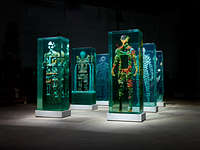









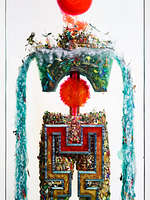









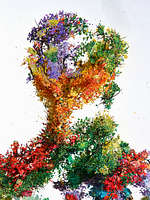
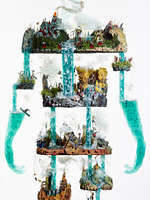





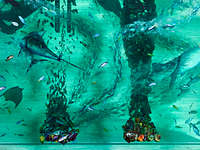

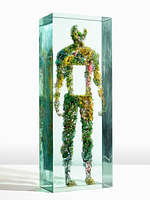
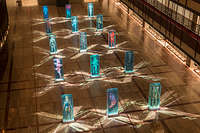
Both borrowing, and breaking from the Situationist International—an artist and activist collaborative who termed their method of mapping how desire affects the urban experience “pyschogeography”—Yellin’s eponymous series of montages also collapse mental projection through cartography. Here, an exploded catalog of icons, thirsts, dreams, and even nightmares congeal as physical, humanoid, shapes. Instead of the quotidian streets and pathways of everyday life, each work structures a network of picture puzzle allegories that link our minds and bodies to the world metonymically, and back again.
Following various associative, and psychedelic logics, Yellin’s totems also allude to the “Terracotta Army”, a vast array of life-size clay funerary figures entombed within the mausoleum of Emperor Qin Shi Huang. While these ancient figures were meant to serve their leader in the afterlife, the Psychogeographies invite viewers to engage with the legions of their own consciousness, and its embodied emotions as well as that of our shared collective society and its infrastructures–on this subject, Yellin often teases that paper itself might soon disappear, and as such, these works might become artificial fossiles trapping the material much like a prehistoric fly in amber.

Glass, Collage, Acrylic
70.75 x 27.125 x 15.625 inches



Glass, Collage, Acrylic
71.125 x 27.25 x 16 inches

Glass, Collage, Acrylic
71.125" x 27.25" x 16"

Glass, Collage, Acrylic
71.125 x 27.25 x 15.75 inches




Glass, Collage, Acrylic
71 x 27.25 x 15.75 inches


Glass, Collage, Acrylic
70.75 x 27.125 x 15.625 inches




Glass, Collage, Acrylic
70.75 x 27.125 x 15.625 inches
Private Collection

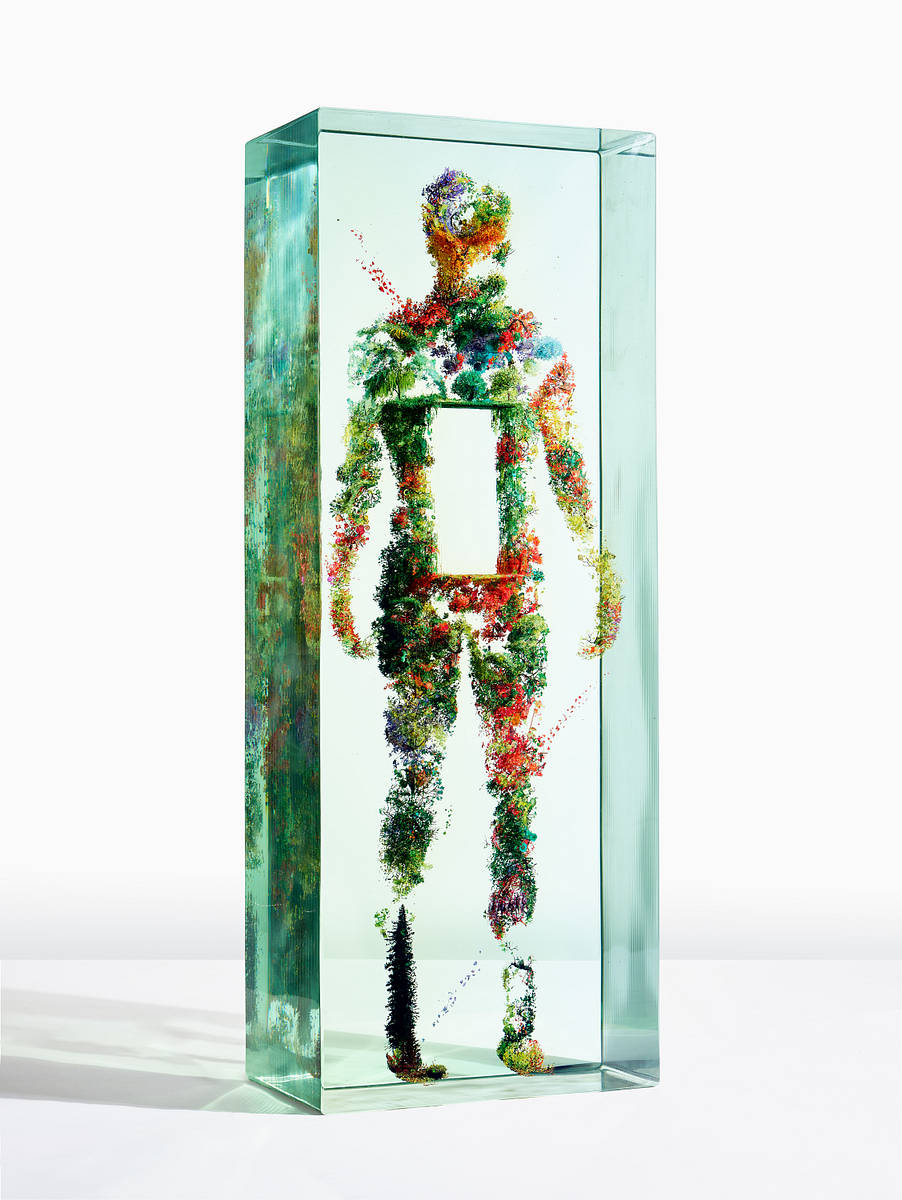
Glass, Collage, Acrylic
70.25 x 27.125 x 15.625 inches
Private Collection




Glass, Collage, Acrylic
70.75 x 27.125 x 15.625 inches
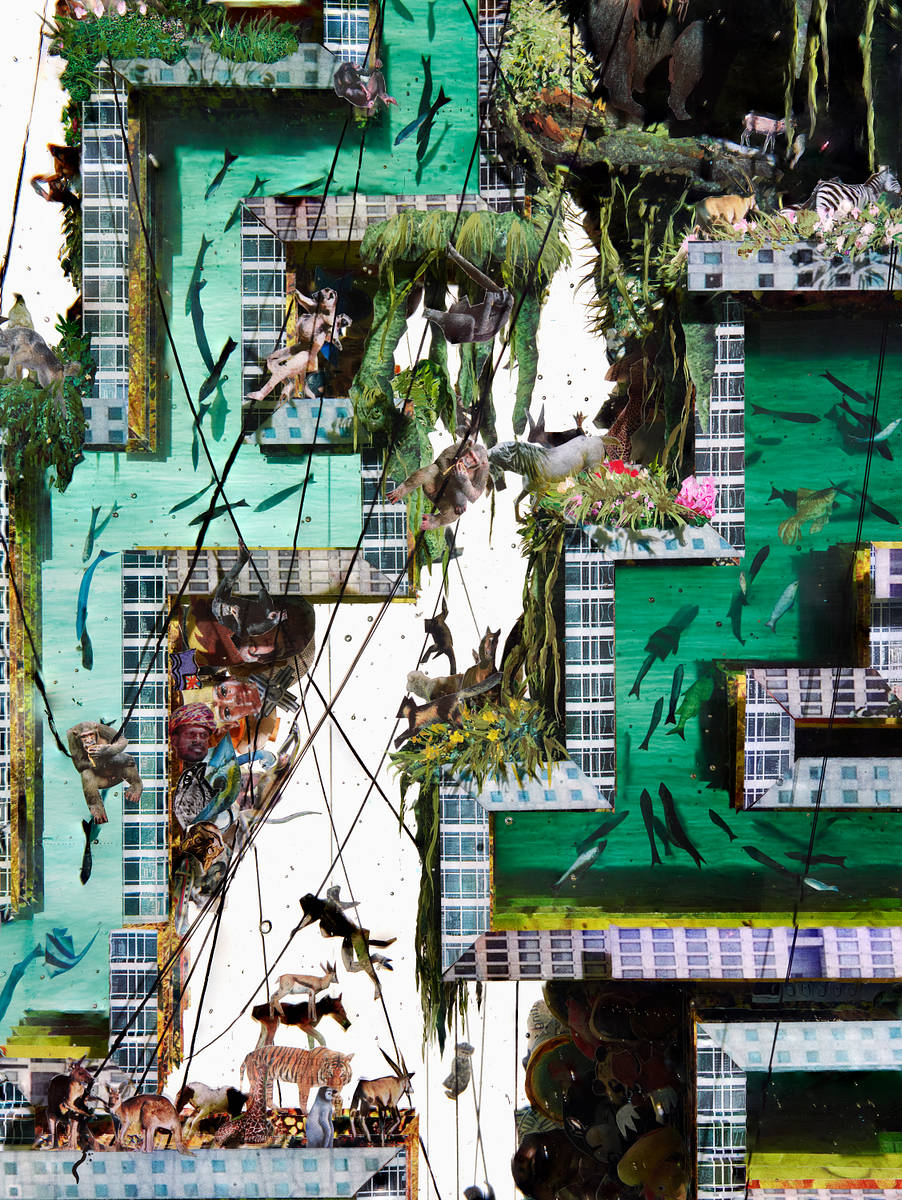

Glass, Collage, Acrylic
71 x 27 x 15.5 inches

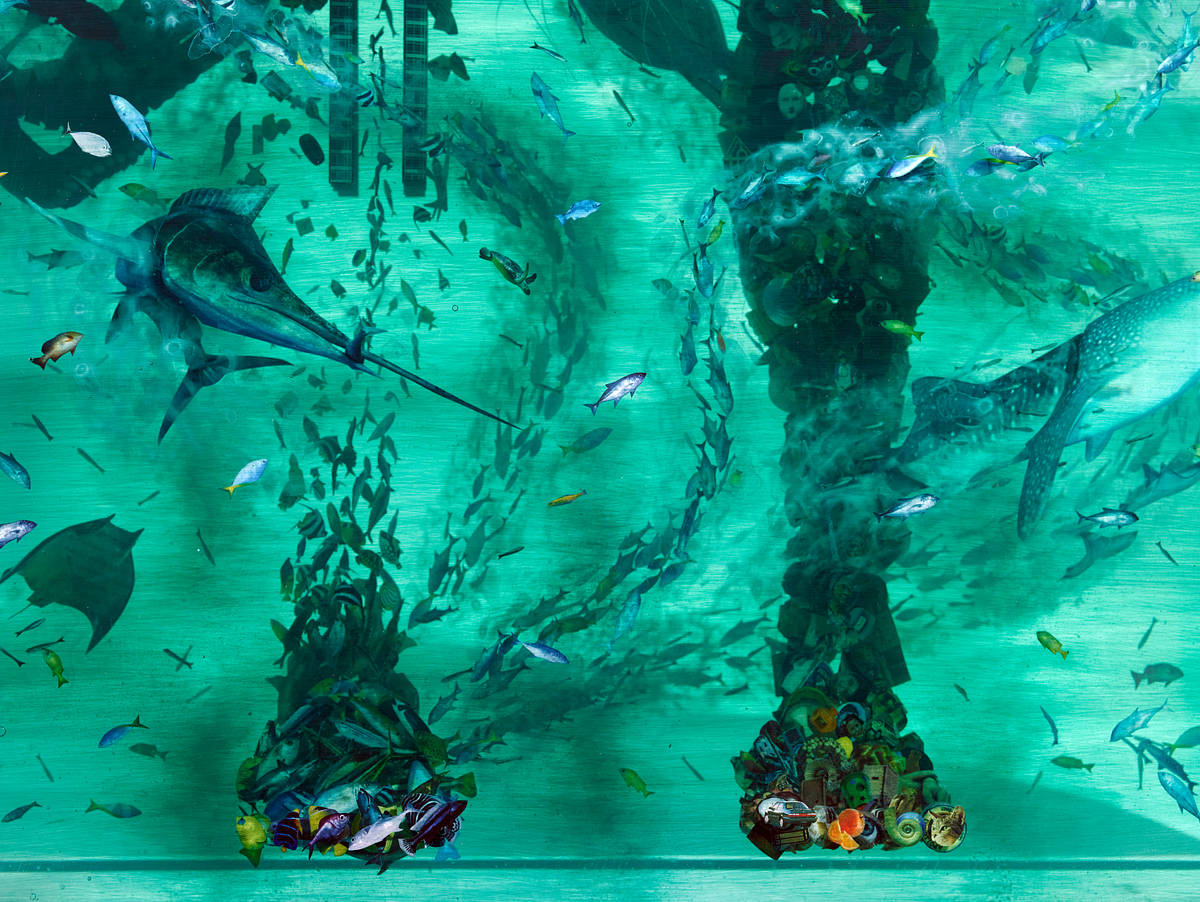


Glass, Collage, Acrylic
71 x 27 x 15.625 inches
